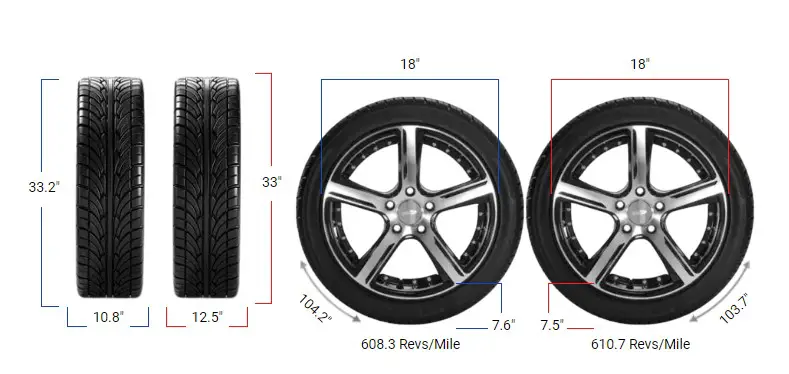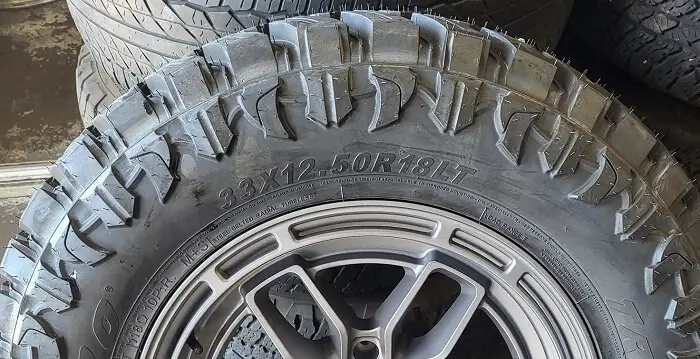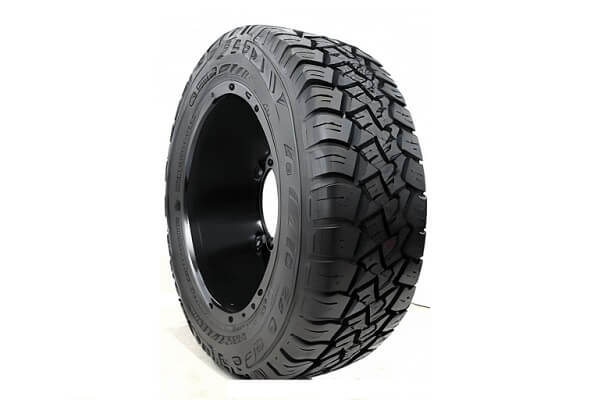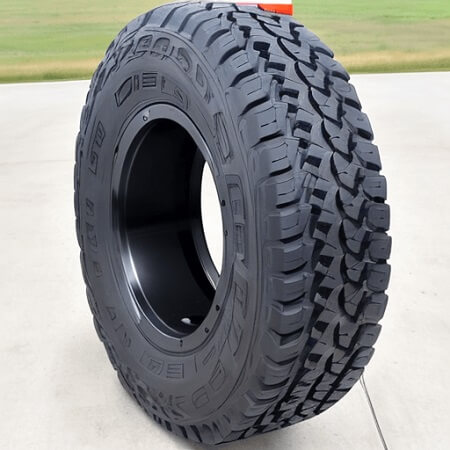Tire Size 275/70r18 vs 33×12.50r18

Switching from 275/70r18 to 33×12.50r18 tires is a popular upgrade for many vehicle owners. This change offers a slight increase in overall diameter and a significant boost in width. Here are the top 5 key points of switching from 275/70r18 to 33×12.50r18 tires:
- Wider tires provide better off-road traction and stability
- Minimal impact on speedometer accuracy and overall vehicle height
- Slightly increased road noise and reduced fuel efficiency
- More aggressive aesthetic appearance for trucks and SUVs
- May require minor modifications to prevent rubbing issues
275/70r18 vs 33×12.50r18 Table
The most significant difference when switching from 275/70r18 to 33×12.50r18 tires is the width increase. The new tires are 1.69 inches (43 mm) wider, representing a 13.5% increase.

Fitment Guide
Replacing tires with significantly different sizes can require modifications to prevent rubbing or clearance issues. The 33×12.50r18 is only 0.4% larger in overall diameter than the 275/70r18.
So it should fit most vehicles designed for 275/70r18 tires without issues. Larger adaptations like lift kits would only be necessary if switching to a tire over 3% larger in diameter.
On-Road Impact
Switching to wider, slightly taller tires can affect various aspects of on-road performance. Let’s examine how this tire change impacts everyday driving:
- Gas Mileage: The wider 33×12.50r18 tires may slightly decrease fuel efficiency due to increased rolling resistance and weight. However, the minimal diameter difference (0.4%) means this effect should be negligible for most drivers.
- Ride Comfort: The taller sidewall of the 33×12.50r18 tires (7.51 inches vs. 7.58 inches) might provide a marginally smoother ride by absorbing small bumps more effectively. But this 0.9% difference is unlikely to be noticeable to most drivers.
- Speedometer Accuracy: With only a 0.4% difference in tire diameter, speedometer accuracy is minimally affected. At 20 mph, the actual speed would be 20.08 mph – a difference most drivers won’t notice or need to worry about.
- Handling: The wider 33×12.50r18 tires offer more rubber on the road, potentially improving dry traction and cornering stability. However, they may also increase the risk of hydroplaning in wet conditions due to the wider contact patch.
- Noise: Wider tires, especially those with aggressive tread patterns often found on 33×12.50r18 sizes, may produce more road noise compared to the narrower 275/70r18 tires.

Off-Road Impact
For off-road enthusiasts, the switch to 33×12.50r18 tires can bring several benefits. Here’s how the change affects off-road performance:
- Ground Clearance: The minimal increase in diameter (0.13 inches or 3.4 mm) provides a negligible boost in ground clearance. This small change is unlikely to significantly impact off-road capability.
- Traction: The substantially wider 33×12.50r18 tires offer a larger contact patch, which can greatly improve traction in loose terrain like sand, mud, or gravel. This wider footprint allows the tire to “float” better on soft surfaces.
- Rock Crawling: While the diameter increase is minimal, the wider tires can provide better stability and grip when navigating rocky terrain. The ability to run lower air pressures in the wider tires can further enhance off-road performance.
- Aesthetics: The wider 33×12.50r18 tires give vehicles a more aggressive, off-road ready appearance. This “beefier” look is often desirable for truck and SUV owners looking to enhance their vehicle’s style.
- Durability: Off-road oriented 33×12.50r18 tires often feature stronger sidewalls and more robust construction compared to standard 275/70r18 tires. This can increase puncture resistance and overall tire longevity in harsh off-road conditions.
What is the Difference Between 275/70r18 and 33×12.5r18?
The main difference between 275/70r18 and 33×12.5r18 tires is their width. The 33×12.5r18 tire is significantly wider, measuring 12.52 inches (318 mm) compared to the 275/70r18 at 10.83 inches (275 mm).
This represents a width increase of 1.69 inches (43 mm) or 13.5%. This substantial width difference can greatly impact vehicle handling, off-road traction, and overall appearance, making it the most notable distinction between these two tire sizes.

Can I Use 33×12.5r18 Instead of 275/70r18?
Yes, you can use 33×12.5r18 tires instead of 275/70r18 tires. The diameter difference between these two tire sizes is only 0.4%, which is well within the recommended 3% tolerance.
This means the interchange is generally acceptable without major modifications to your vehicle. However, due to the significant width increase, you may need to make some adjustments to prevent rubbing or clearance issues.
How Much Taller Is a 275/70r18 Tire Than a 33×12.5r18?
The 275/70r18 tire is actually slightly taller than the 33×12.5r18 tire, but the difference is minimal. The 275/70r18 has a diameter of 33.16 inches (842.2 mm), while the 33×12.5r18 has a diameter of 33.02 inches (838.8 mm). This means the 275/70r18 is taller by 0.13 inches (3.4 mm), which is a difference of only 0.4%.
How Much Wider is a 33×12.5r18 Tire Than a 275/70r18?
The 33×12.5r18 tire is significantly wider than the 275/70r18 tire. The 33×12.5r18 has a width of 12.52 inches (318 mm), while the 275/70r18 has a width of 10.83 inches (275 mm).
This means the 33×12.5r18 is wider by 1.69 inches (43 mm), which represents a 13.5% increase in width compared to the 275/70r18 tire.

Our Observation
Switching from 275/70r18 to 33×12.50r18 tires offers a mix of benefits and potential drawbacks. The minimal diameter increase means on-road performance and speedometer accuracy remain largely unaffected.
However, the significant width increase can enhance off-road capability and aesthetics at the cost of potential rubbing issues and slightly reduced fuel efficiency.
For off-road enthusiasts, the improved traction and durability make this an attractive upgrade. On-road drivers may appreciate the more aggressive look but should be prepared for potentially increased road noise and a minor hit to fuel economy.
Overall, this tire switch offers more substantial benefits for off-road use while having relatively minor impacts on everyday on-road driving.

Meet Caitlin McCormack, a Tire Size Expert and Blogger Passionate About Everything Related to Tires. With Years of Experience in the Tire Industry, Caitlin Has Become an Expert in Tire Sizes and Their Impact on Vehicle Performance.
